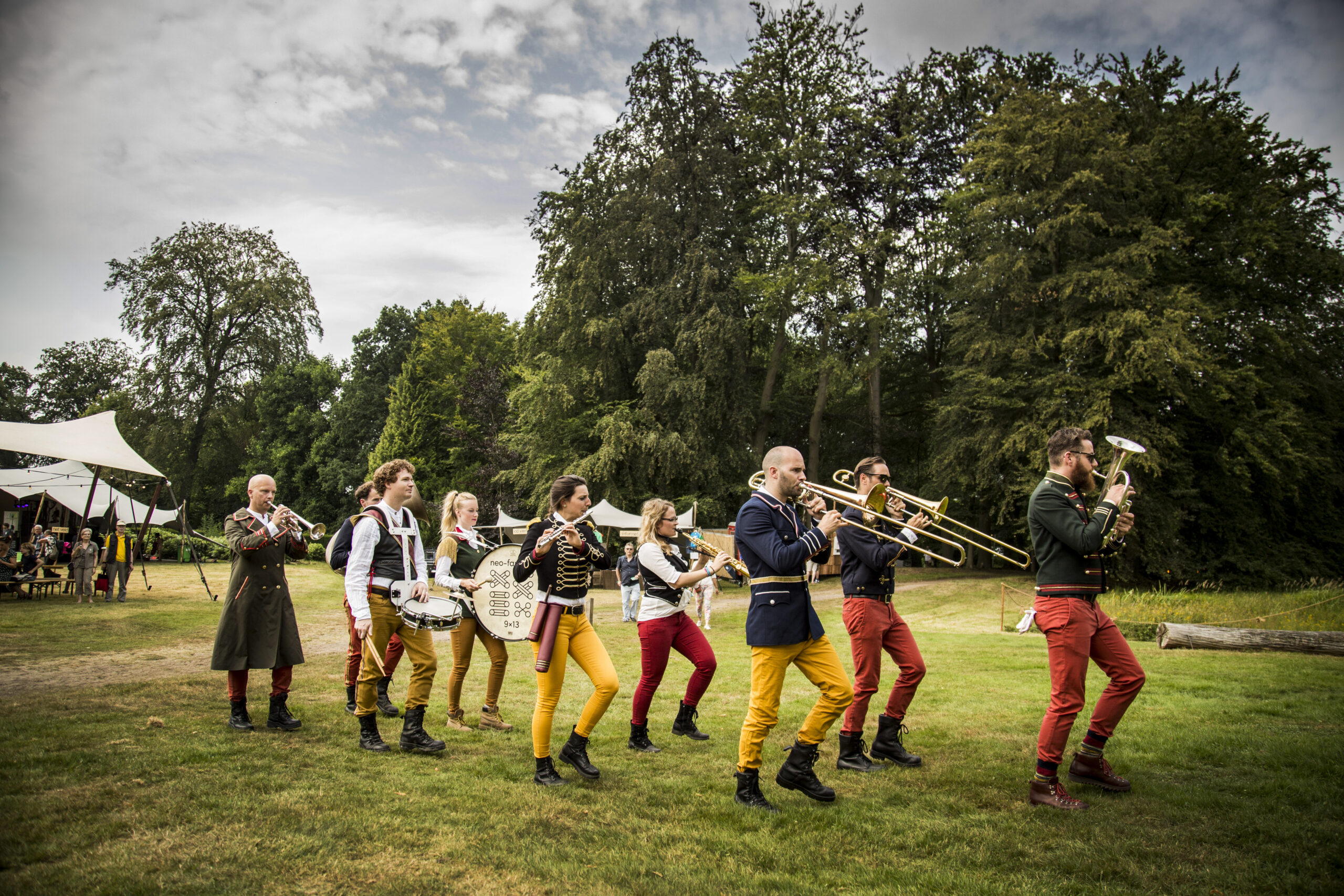Relaxed ambiance during Wonderfeel eases the access to classical music

One of The Bunschoten Fund’s goals is ‘to protect the unique, fragile classical music culture’. This also means connecting with the changing appetites of the audience as far as leisure activities are concerned. A good example of this contemporary way of conveying classical music is Wonderfeel in ’s-Graveland. The Bunschoten Fund supports the modest festival with a Quick Scan worth € 5,080 and a contribution of € 5,000 for acquiring the Dutch charitable foundation status.
The six roofed in stages of Wonderfeel are located on the twenty-five acres of nature reserve Schaep en Burgh in ’s-Graveland. You can visit each and every one of them during a mini walk. They offer every visitor something of his or her liking: from Wolfgang Amadeus Mozart to Steve Reich, from Antonio Vivaldi to Arvo Pärt, fanning out to jazz, world music and pop. Visitors can make themselves comfortable on benches, on beanbags under the trees or on a blanket in the grass and enjoy world-class musicians, from rising stars to seasoned talent. The program is supplemented with movies, stories and crafts for children. Wonderfeel works closely together with Natuurmonumenten to realize all of this.
Here are a few examples to give you a foretaste of the Wonderfeel 2017 program, which encompasses more than a hundred concerts, music documentaries, lectures, children’s activities and rolling kitchens: • Neo-fanfare 9×13 brings Trance on a mobile, a Mad-Max-inspired chariot full of tribal elements, traditional percussion and junk percussion. Trance is badass, smooth and dark, full of absurdism. • Mezzo Adèle Charvet and pianist Florian Caroubi, winners of no less than five awards during the 50th International Vocalists Concours, bring their sensory program with the theme Duft, the miracle of odor. • The Amstel Quartet & Pascal Meyer bring the Orphanage of the Hits. • The ASKO|Schönberg Kwartet brings The Sonic Great Wall of Huang Ruo. • The string men of BartelomeyBittman perform their magic on simply acoustic instruments, bringing forth a sound that turns the classical palette of sound completely on its head. On cello, violin and mandola it is neither jazz nor metal, neither rock and roll nor minimal music and not classical music either — so what is it then?

